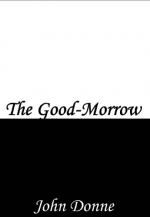
|
| Name: _________________________ | Period: ___________________ |
This test consists of 15 multiple choice questions and 5 short answer questions.
Multiple Choice Questions
1. What imperfection does line 18 suggest exists in the real northern hemisphere?
(a) It is stressful.
(b) It is ugly.
(c) It is cold.
(d) It is boring.
2. What do the poem's final three lines suggest is true about the speaker's and his lover's relationship?
(a) Because they love and give an equal amount, their love is immortal.
(b) The power of their love can overcome any real-world obstacles.
(c) Their relationship already feels as if it has gone on forever.
(d) He wishes that she would give as much to the relationship as he does.
3. What is the rhyme scheme within each stanza?
(a) ABABABA.
(b) ABABCCC.
(c) ABCABCA.
(d) AABBCCC.
4. What is the best interpretation of the meaning of "but this" in line 5?
(a) "However, when you consider what I am saying."
(b) "Although pleasure is wonderful."
(c) "Except for our relationship."
(d) "On the other hand, the poem I am writing."
5. In lines 2 and 3, what does the speaker compare himself and his lover to, before their relationship began?
(a) Animals.
(b) Farmers.
(c) Babies.
(d) Inanimate objects.
6. Where does the poet describe what the lovers see in one another's faces?
(a) Line 16, "true plain hearts."
(b) Line 18, "sharp north" and "declining west."
(c) Line 13, "worlds on worlds."
(d) Line 17, "better hemispheres."
7. What kind of fear is the speaker referring to in line 9?
(a) Fear of the beloved's disapproval.
(b) Jealousy and insecurity about the relationship.
(c) An existential fear of purposelessness and loss of meaning.
(d) Fear of loneliness and despair.
8. Which technique is used repeatedly in the first quatrain?
(a) Paradox.
(b) Appeal to Ethos.
(c) Understatement.
(d) Rhetorical question.
9. Which term describes this poem most accurately?
(a) Dialogue.
(b) Aside.
(c) Apostrophe.
(d) Epistle.
10. In line 1, the speaker uses the word "troth." What does this word mean in this context?
(a) A pledge of honesty.
(b) Religious faith.
(c) A sincere question.
(d) Soul, or life force.
11. Who is the author of "The Good Morrow"?
(a) John Donne.
(b) George Herbert.
(c) Andrew Marvell.
(d) Henry Vaughan.
12. Line 10, "For love, all love of other sights controls," contains an example of which technique?
(a) Polysyndeton.
(b) Epistrophe.
(c) Parallelism.
(d) Diacope.
13. In line 14, "Let us possess one world, each hath one, and is one," what two things are being compared?
(a) The lovers and worlds.
(b) Maps and worlds.
(c) Poetry and worlds.
(d) Explorers and worlds.
14. What does the phrase "'Twas so" in line 5 mean?
(a) It makes clear that the whole stanza is hypothetical, not a reality.
(b) It creates a shift in time, indicating that lines 5-7 take place in the future.
(c) It confirms that the possibilities outlined in lines 1-4 were actually true.
(d) It introduces the logical consequences of the ideas offered in lines 1-4.
15. Which term describes the use of the word "beauty" in line 6?
(a) Metonymy.
(b) Appositive.
(c) Pun.
(d) Hyperbole.
Short Answer Questions
1. What does the speaker say is "waking" in line 8?
2. Lines 12-14, "Let sea-discoverers to new worlds have gone,/ Let maps to other, worlds on worlds have shown,/ Let us possess one world, each hath one, and is one," contain an example of which technique?
3. Although the speaker has indicated that each lover is a complete world, where does the diction suggest that each is actually incomplete without the other?
4. Which term best describes the rhyming in lines 13 and 14, "Let maps to other, worlds on worlds have shown,/ Let us possess one world, each hath one, and is one"?
5. What is the literal meaning of the poem's title?
|
This section contains 584 words (approx. 2 pages at 300 words per page) |

|




